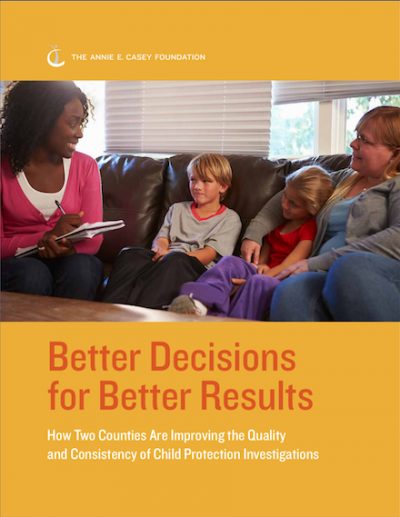The CQI Difference in Ohio
In 2017, Cuyahoga County completed about 24% of its safety assessments within the required seven-day period. By 2018, the agency’s on-time assessment rate had jumped to 44%.

This report, intended for child welfare leaders and staff, tells how two county agencies applied Continuous Quality Improvement processes to improve their decision-making processes and achieve better outcomes for children and families in their care.
While both agencies — Ohio’s Cuyahoga County Division of Children and Family Services and Colorado’s Jefferson County Department of Human Services — employed a different approach, their paths to progress intersected in key ways. Each agency tracked and analyzed data on how cases are handled and also reviewed current investigations to gather feedback on patterns, anomalies and lessons learned. The agencies then used this information to improve their own policies and practices.
The goal? Ensure that frontline casework — particularly at a child welfare system’s point of entry — is consistent and values-driven. The blueprint for change? CQI reviews, an approach that helps agencies incorporate more voices, perspectives, data and rigor into their decision-making processes and then shift policies and practices accordingly to better serve children and families.
We hope you'll find value in this report. We’d love to get a little information from you, which we'll use to notify you about relevant new resources.